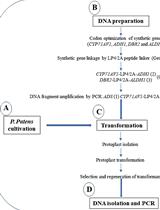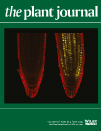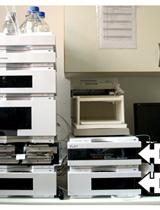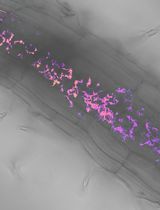- EN - English
- CN - 中文
Extraction and Analysis of Carotenoids from Escherichia coli in Color Complementation Assays
在颜色互补分析实验中提取及分析大肠埃希杆菌中的类胡萝卜素
发布: 2017年03月20日第7卷第6期 DOI: 10.21769/BioProtoc.2179 浏览次数: 12162

相关实验方案

通过在体内直接组装多个DNA片段在青蒿中异源生产青蒿素
Nur Kusaira Khairul Ikram [...] Henrik Toft Simonsen
2023年07月20日 2214 阅读
Abstract
A common method to investigate the function of genes putatively involved in carotenoid biosynthesis is the so called color complementation assay in Escherichia coli (see, e.g., Cunningham and Gantt, 2007). In this assay, the gene under investigation is expressed in E. coli strains genetically engineered to synthesize potential carotenoid substrates, followed by analysis of the pigment changes in the carotenogenic bacteria via high-performance liquid chromatography (HPLC). Two crucial steps in this method are (i) the quantitative extraction of the carotenoids out of E. coli and (ii) the reproducible and complete separation of the pigments by HPLC.
Here, we present a protocol for the extraction and analysis of carotenoids with a broad range of polarities from carotenogenic E. coli. The solvent mixture used for extraction keeps both the lipophilic carotenes and the more polar xanthophylls in solution and is compatible with the eluent gradient of the subsequent HPLC analysis. The C30-column used is particularly suitable for the separation of various cis-isomers of carotenoids, but also for separation of stereoisomers such as α- and β-carotene or lutein and zeaxanthin.
Materials and Reagents
- 50 ml screwcap polypropylene (PP) tubes, sterile, pyrogen-free (SARSTEDT, catalog number: 62.547.254 )
- 15 ml screwcap PP tubes, sterile (SARSTEDT, catalog number: 62.554.502 )
- Escherichia coli, strain depending on the plasmids used (see Notes)
- Methanol HPLC grade (EMD Millipore, catalog number: 106018 )
- Acetone p.a. grade or higher (EMD Millipore, catalog number: 100014 )
- Dichloromethane p.a. grade or higher (Fisher Scientific, catalog number: 10626642 )
- ddH2O
- Ammonium acetate p.a. grade (EMD Millipore, catalog number: 101116 )
- Acetonitrile HPLC grade (EMD Millipore, catalog number: 113358 )
- Ethyl acetate HPLC grade (Merck Millipore, catalog number: 113353 )
- Lysogeny broth medium (Carl Roth, catalog number: X968.3 )
- Eluents (see Recipes)
- Eluent A
- Eluent B
- Eluent C
Equipment
- For pigment extraction:
- Photometer (Eppendorf, model: Bio Photometer 6131 )
- Vortexer (Scientific Industries, model: G-560E )
- Ultrasonic bath (Elma Schmidbauer, model: Transsonic T 460 , or BANDELIN electronic, model: Sonorex TK52 ) (see Notes)
- Centrifuge (Beckman Coulter, model: Avanti J-25 )
- Centrifuge rotor for 50 ml tubes (Beckman Coulter, model: JA25.50 ) with round bottom adapters for 15 ml tubes (Corning, model: 8441 )
- For HPLC analysis:
- HPLC system with quaternary pump, in-line degasser, thermostatted autosampler, column heater and photodiode-array (PDA) detector (Waters, models: 2795 Separation Module and 2996 photodiode-array detector )
- C30-Column 250 x 4.6 mm (5.0 µm, 250 x 4.6 mm) (Bischoff, model: ProntoSIL 200-5-C30 , catalog number: 2546H300PS050)
- Guard column 20 x 4.0 mm (5.0 µm, 20 x 4.0 mm) (Bischoff, model: ProntoSIL 200-5-C30 , catalog number: 6302H300PS050) connected to column by guard cartridge holder (Bischoff, catalog number: 1502 0508 )
Software
- HPLC-Software (Waters: Empower Pro)
Procedure
文章信息
版权信息
© 2017 The Authors; exclusive licensee Bio-protocol LLC.
如何引用
Blatt, A. and Lohr, M. (2017). Extraction and Analysis of Carotenoids from Escherichia coli in Color Complementation Assays. Bio-protocol 7(6): e2179. DOI: 10.21769/BioProtoc.2179.
分类
植物科学 > 植物新陈代谢 > 其它化合物
您对这篇实验方法有问题吗?
在此处发布您的问题,我们将邀请本文作者来回答。同时,我们会将您的问题发布到Bio-protocol Exchange,以便寻求社区成员的帮助。
Share
Bluesky
X
Copy link












